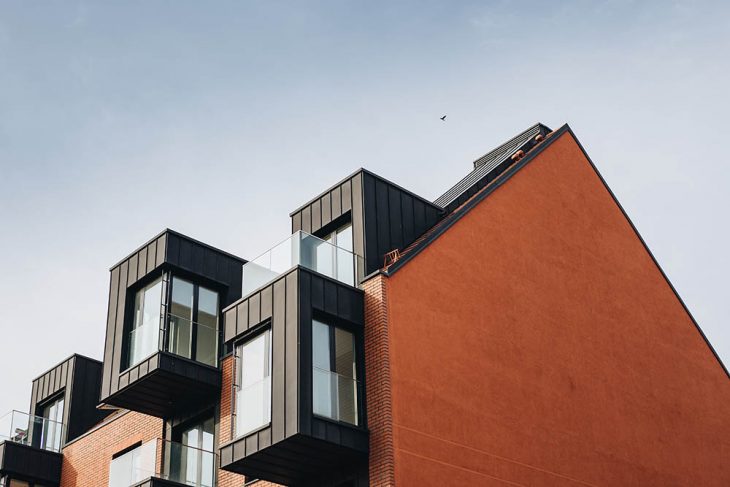
Energy efficiency at home – and how to improve it – is one of the hottest topics of our times, and for a very good reason. A major driving factor for this vogue is undoubtedly the more eco-conscious character of our age, with market studies clearly revealing that anything branded “environmentally friendly”, “eco-conscious”, or “energy efficient” is more popular, will sell more, and will reflect favourably on whatever organisation or company is behind it. Yet when it comes to property, there is a somewhat more immediate and substantially more powerful incentive to invest in energy efficiency. This is nothing more complicated than it can lead to serious savings on energy bills, consistently into the hundreds of pounds every year.
For property developers, the stamp of “energy efficient” on a property is the gold standard for attracting a new generation looking to save the planet and their bank balances. It is no surprise then that new homes currently being developed all hold home energy efficiency as a top priority. But what does it actually mean?
Defining Home Energy Efficiency
Humans need to breathe, and thus no home can possibly exhibit 100% energy efficiency (which would require a property to be hermetically sealed). Any exposure to the outside will inevitably lead to energy expenditure either keeping the place cool or heating it up.
Energy efficiency is most essentially concerned with the minimisation of energy wastage while providing all of the comforts that modern homeowners have come to expect and demand. Despite what you might think, this is not a zero-sum game; it does not necessarily follow that using less energy means getting less heat from your radiator or less light from your light bulbs.
Advancements in technology have found many ways for traditional products to provide the same and yet use less. Consider the humble energy saving light bulb. This simple device will eat up less electricity, but you will get the same amount of light.
The way an energy efficient home is built works on the same principle. An “energy saving home”, if you will, offers the same amount of warmth with less energy needed to create it. This is most fundamentally a matter of heat conservation, the ability to more effectively preserve the indoor atmosphere against the effects of the outdoors whether that be the heating-sucking effects of a cold day or the warming effect of a hot one. A home that keeps energy transfer between inside and outside to a minimum is one we may term “energy efficient”.
This has long been an important goal of all new builds and is an area in which innovation and new technology is forging ahead to make new homes as energy efficient as possible. Yet while it may be obvious how this can contribute to saving the planet, how much cash can it actually save the owner?

Greener and Cheaper Today
Of course, not everyone lives in a new home. In fact, a great deal of the housing stock in the UK is actually pretty old. This is not a bad thing in and of itself for two main reasons:
- Older homes can be beautiful, and people want to live in them
- Older homes can be adapted and upgraded to significantly improve energy efficiency.
Whatever the reason, the popularity of older homes nevertheless offers us a useful metric by which to judge just how much the energy efficient homes of today (and the future) can save homeowners.
It can be taken as a given across the board that new build homes are considerably cheaper to run and have a dramatically lower carbon footprint than older houses. For comparison, a 3-bedroom semi-detached Victorian house (of which there area great many in the UK) has an average yearly energy cost of £1,670. This is a figure that takes into account the many modern energy saving improvements that are standard for such homes. For comparison, a house built to 2013 Building Regulations could have average yearly energy costs of £780.
In anyone’s book, this is a whopping saving. Moreover, it does not even refer to homes built with maximum energy efficiency as a stated goal, merely those built to legally imposed standards in 2013. For a more energy efficient new build property that attempts to go above and beyond, the savings could be as much as £870 over the equivalent Victorian property with modern improvements.
Greener and Cheaper into the Future
What causes such high savings is the new building techniques that prioritise insulation, heat conservation, and electricity saving. Such homes nearly always come kitted out with various energy-saving devices such as energy-efficient lighting and loft insulation.
And things only seem to be heading one way. As society at large becomes generally more eco-conscious and the massive savings to be had become widespread knowledge, builders are incentivised to make good use of innovative new technologies to improve a home’s energy efficiency.
With new builds, buyers expect everything to be new, from the windows to the boiler to the doors. What this means in practice is that as each new generation of housing appears, it is kitted out with the latest technology in all of these areas and that technology is typically energy saving.
A boiler, for example, actually accounts for 55% of your energy bills. If this particular product is inefficient, that’s a massive saving to be missed out on. Luckily, the general rule of “new house, new boiler” holds good and is one of the many reasons new homes are significantly more energy efficient. The same goes for double-glazed windows, roof insulation, and everything else that can keep your bills low.
Of course, whatever property you find yourself in, there are always changes that you yourself can make.
Energy-Saving Upgrades
A typical homeowner will nearly always find themselves making upgrades to a new home, even if it’s a new build with a wealth of energy-saving devices installed already. This is another simple factor that is driving the relentless march of home energy efficiency.
The list of potential improvements here is vast and can range from the commonplace, like boiler upgrades, to the slightly more niche, like installing your own fire safety system with small fire extinguishers and heat alarms.
Improvements that can be made to even a new home include installing cutting edge draught exclusion technology or solar panels. Despite the cost of solar panels plummeting in recent years, new homes as yet rarely come with them pre-installed. This opens up a whole new avenue of savings for the canny homeowner.
Whatever form it takes, the trend of energy efficiency only goes one way. This bodes well for the environmental impact of the housing sector and, in what is perhaps a more immediate incentive, the bank balances of homeowners.



